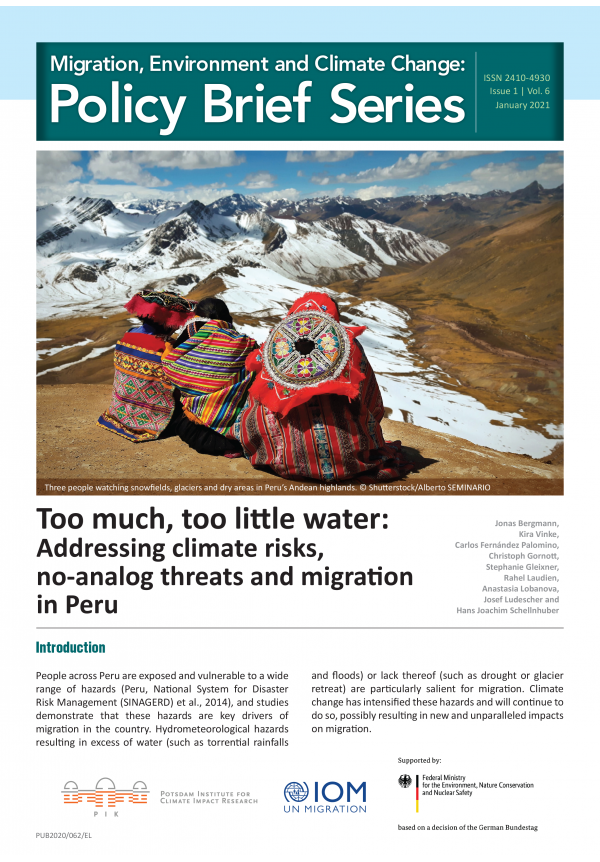Migration, Environment and Climate Change: Policy Brief Series Issue 1 | Vol. 6 | January 2021

Migration, Environment and Climate Change: Policy Brief Series Issue 1 | Vol. 6 | January 2021
Too Much, Too Little Water (policy brief)
People across Peru are vulnerable and exposed to a wide range of hazards, and studies demonstrate that these hazards are key drivers of migration in the country. Hydrometeorological hazards resulting in excessive amounts of water (in such forms as torrential rainfalls and floods) – or the lack thereof (such as drought or glacier retreat) – are particularly salient to migration. Climate change has intensified these hazards and will continue to do so, possibly resulting in new and unparalleled impacts on migration.
This policy brief, based on a systematic review of the literature and expert interviews, assesses available scientific evidence on the nexus between climate risks and migration in Peru. It discusses the necessity to understand climate migration patterns and improve planning and policies in the short term to the mid-term, in view of several “no-analog threats” – that is, those with unprecedented, large impacts – that could occur towards the end of the century. Recent policy developments in the country, such as the National Plan of Action on Climate Migration and the National Adaptation Plan (NAP), can break new ground in addressing these challenges.
Read More
- Introduction
- People across Peru are exposed and vulnerable to different water-related hazards, which affect livelihoods and can induce migration
- Hazards resulting in excess and lack of water are key and growing drivers of migration in Peru
- Climate change will continue to intensify water-related hazards and could turn them into unparalleled drivers of migration
- Rapid action is needed to leverage a comprehensive governance approach to climate migration
- References